E-commerce Website Redesign
Enterprise International SEO

Overdrive Interactive generated this image in part with OpenAI’s DALL·E on 2022-09-29
According to Statista, around 15% of Internet users use search engines other than Google as of January 2022. These search engines include Yahoo, Bing, and regional search engines such as Baidu and Yandex. Furthermore, even if you only want to focus on Google SEO as part of your marketing mix, ensuring that the correct consumers are sent to the proper regional webpages as well as optimizing local user experience and conversion, is still critical to your business.
Do you have consumers from other countries? Do you have any customers that speak another language? If you responded yes to either of those questions, you should consider optimizing your enterprise international SEO strategy.
Don’t know where to start? Don’t worry, in this article, we’ll go through what enterprise international SEO is, some high-level enterprise SEO strategies, enterprise technical SEO insights, and keyword research tips that are specific to international SEO.
Marketing Minute Video: Understanding Integrated Digital Marketing
Watch Harry J. Gold, CEO of Overdrive Interactive, explain how all the elements of digital marketing must work together, so you can succeed across search engine marketing (SEO and SEM), online media, persuasive creative, and marketing analytics.
Watch the Video
High-Level International SEO Strategies and Principles
An effective international SEO strategy should ensure users can easily find your content through search, and they should feel like all pages they land on are specifically created for them and designed for users in their regions or speaking their language, because they are!
This means making sure users can find your site using their preferred languages, and that your content is presented in the languages they use. Furthermore, after the users land on your website, you should make sure the UX and UI design, as well as conversion journey, match their local specific convention and preferences.
To achieve this, make sure you keep three high-level strategies and principles in mind before you start your International SEO implementation.
1. Know Your Global Audiences
The key to effective international SEO is understanding your audience. To know your global audiences means you must conduct international market research, keyword research, and user behavior research to understand their needs and searching behaviors.
This is an extremely complex task and requires a thorough understanding of your business and the languages spoken by your customers. Once you have defined your target countries, regions and languages, international SEO will work to drive organic traffic from those countries, regions or audiences speaking the targeted languages.
2. Language-Targeting or Country/Regional Targeting?
It is important to first decide if you want to target different countries/regions or if you actually just want to target users speaking different languages. While these two concepts might sound like the same thing, the strategies between multi-regional sites and multi-lingual sites can be vastly different.
3. Take Regional Regulations and Internet Accessibility into Account
Local regulations may prohibit you from presenting specific information (or require you to disclose more to customers).
GDPR (General Data Protection Regulation) is a good example; it requires organizations that interact with EU citizens to change many aspects of their websites, including cookie policies.
Another example is China. Due to the Great Fire Wall and Internet regulations, most of the Internet content published outside of China and owned by websites without official Internet Content Provider (ICP) licenses registered in China will not be accessible in mainland China. That means if you want your web content to be accessible from mainland China, you will need to obtain your China-based ICP license and comply with all of their media regulations, which might require extra effort.
URL Structures for Multi-Lingual/Multi-Regional Sites
If you want to target multiple language users or multiple regions, you can structure URLs in several ways. The three most frequently used URL patterns for international SEO are:
- ccTLDs (country-specific top-level domains)
- Sub-domains
- Sub-folders (sub-directory)
Each of the above URL structures has advantages and disadvantages that influence how well your new site will rank in the search results. We’ll go through each of them in this section and help you determine the optimal URL formats for your international SEO strategies.
ccTLDs (country-specific top-level domains)
Example: domain.de
A ccTLD is a third-level domain that is distinct from the root domain. As a result, it doesn’t share the same link equity as your primary domain. It may take some time for it to gain enough authority to begin ranking highly.
In addition, because the ccTLD is its own website, it may take more resources to manage.
The ccTLD strategy was formerly recommended by SEOs since Google utilized it to establish the site’s target location. This, however, may no longer be the case, according to much new evidence, including Search Engine Journal’s Author Eli Schwartz’s findings from 2017.
Sub-Domains
Example: de.domain
A subdomain is an additional part to your main domain name. This method does not necessitate the use of a separate domain name. From a technological standpoint, it’s also easier to maintain.
According to Google’s Search Advocate John Mueller, subdomains are usually treated as the same domain as the root domain, hence will share the domain level ranking signals with the root domain.
Sub-Folders (Sub-Directories)
Example: domain/de/
A subdirectory is a simple way to segment international content without separate installs, subdomains, or ccTLDs. The content of the subfolder is placed on the root domain. Therefore, you won’t need to create several domains to manage it. It inherits existing link equity, which immediately benefits the foreign site in the SERPs. A subdirectory for each country, region, or a combination of both could be the most efficient option if you want to expand to different countries and share the authority you build with other countries.
Summary Pros & Cons of Different International URL Structures
| URL Structure | Example | Pros | Cons |
| ccTLDs | example.de | · Increases click-through rates for local search
· Strong regional/language signal to Google · Might give you a leg up on the competition when it comes to ranking locally (even if this is just a minor advantage, every little bit counts) |
· Might not share domain authority with root domain
· It’s generally hard to have ccTLDs for every market |
| Subdomains | de.example.com | · Easier to organize and manage compared to subfolders | · Harder to organize contents |
| Subfolders | domain.com/de | · Does not require another domain
· Shares domain authority signals with the root domain |
· Might have a slightly weaker regional signal to Google
· No additional domain is required |
Translation and Localization
While you can use a direct translation to create content, it will not likely translate well for Google and is unlikely to attract targeted traffic.
To maximize ROI, you should understand the competition and culture of the targeted market. After all, it is your customers who will buy your product or service, not the other way around. The best way to ensure international success is to learn as much as you can about your international market before launching a campaign.
One way to learn more about your audiences and at the same time ensure you are using the right keywords is to conduct localized keyword research.
International Localized Keyword Research
Identifying localized keywords for your business is critical for improving your international SEO. Here are some tips to start your international localized keyword research.
Start The Keyword Research Using the Target Languages
Many SEOs might be tempted to use English “seed” keywords and directly translate them into international terms to use as international keywords. However, this approach is usually not recommended.
The reason is simple, most of the language pairs do not have a one-to-one translation for each word.
Usually, the same English terms can be translated into multiple foreign terms, each with its own nuance, specific connotations, and differing regional search volumes. By translating English terms directly to target languages, you will not only limit the localized keyword selections but also fail to consider many important factors that are crucial to keyword research, including searchers’ intent and keyword search volumes.
Instead, you should start your keyword research using the target language, and only when you complete the initial keyword lists should you translate those keywords into English for internal communication purposes. This brings us to our next tip.
Hire Native Speakers Who Know Some Basic SEO
To do keyword research using the target language, you should consider hiring a native speaker of your target region/language to do the initial keyword research for you. When hiring the native speaking keyword researcher, make sure:
- They have a basic SEO understanding or at least know how to use keyword research tools. If you cannot find such talents, arrange an SEO keyword research 101 workshops with them and introduce them to enterprise SEO tools for keyword research, such as Ahrefs, Moz, Google Keyword Planner).
- Understand keyword intent.
- Familiarize yourself with the industry of your business. (optional)
Pay Attention to Local Search Patterns and Regional Search Behaviors
In addition to the language, another important aspect of international SEO is adapting to local search patterns. For example, Mother’s Day in the U.S. is not the same as the holiday in the UK, so your SEO strategy should be localized to match local search patterns.
When it comes to addressing the global market, you need to consider the specific needs of the targeted countries and regions. There are huge variations in search engine behavior and search habits across countries and regions. A local business should use localized keywords to rank high for such searches (if your business has physical store locations, hyperlocal enterprise SEO should be utilized, as well). In addition, it should be able to rank for the same query as a generic one. By doing so, your business will attract local customers and gain visibility.
Hreflang Implementation
Using hreflang tags to ensure your site is available in different languages can help your website rank better on international search engines as well as make sure the right regional/language version is being served to the right audiences in the SERPs.
By using hreflang meta tags, you tell search engines:
- How one version of a page relates to another
- Which regional/language version of your content is intended for which users
Example Hreflang Tag Code
In the code above, the “x” refers to the language the alternate URL is in.
Include Both Language Versions
If you are localizing your site, make sure to include the hreflang meta tag in both the English and translated versions. Doing so will improve your visitors’ experience and reduce bounces back to the search results. It will also help you improve your rankings and eliminate duplicate content.
Check Hreflang Attributes Regularly
If you’re planning to use hreflang tags on your website, make sure you check the hreflang tag attributes regularly for any mistakes. You can find hreflang implementation guidelines in Google’s Developer Guides.
Avoid Automatic Redirection
It is not recommended to automatically redirect to a specific language or regional version of your website based on their IP, browser setting or cookies. This is because:
- These redirections could prevent from viewing all the versions of your site. The assumption you make might not always be right, and there is a chance the users really wanted to see another version of the page.
- Googlebots are usually sent from the U. As a result, Google might not be able to see all versions of your webpages.
You can, however, offer the suggestion to visitors that other versions of the same page are available. If you want to actively let visitors and search engines know about an alternate version of a page, display a banner with a message such as:
“This page can also be viewed in [another language with hyperlink].”
Toward the bottom of the page, consider including links to alternative localized versions of the content.
Gain Backlinks from Your Targeted Regions
To rank highly in the SERPs for certain regions or languages, you must build relevant backlinks to your site. They should preferably come from websites within the same region or using the same language, giving Google more confidence that your website is trusted by other websites in the same language or location.
Regional UX and Conversion Differentiation
User experience (UX) is quickly becoming one of the most crucial ranking factors for search engines like Google, and it’s not limited to national borders. As a result, if you want your international website to rank well on the search engines, UX elements must be considered when designing and developing your multilingual site.
UX is critical because a good user experience provides positive interactions that keep customers loyal to a product or brand. Furthermore, a great user experience allows you to design customer journeys that are most conducive to the commercial success of your business and ensures a smoother conversion journey.
Best practices when it comes to international UX Design
Include Localized Checkout or Conversion Processes
Have you ever searched a keyword on a search engine, landed on a website, and finally, when you’re just about to subscribe or checkout with your shopping cart, you realize you are on the wrong regional page, or the service/products are not available in your region?
Don’t be the website that causes this unnecessary trouble for your users. Make sure they are landing on the right regional website from the get-go. If they, unfortunately, find themselves on the wrong regional webpage, let them know earlier in the conversion journey.
Add Flexible Payment Options and Use Local Currency for Pricing
Make sure to use local currency for pricing labels. Consumers should be able to choose a currency and convert payments into their own currency.
Take Regional Internet Accessibility and Internet Infostructure into Account
Ensure best Core Web Vitals and page speed experiences in all locations, especially for regions with typically lower Internet speeds or weaker internet infrastructure in place.
Conduct Local UX Research
Conduct market research and collect local/international customer and competition data through exploring, examining, analyzing, and collecting data. Make quantitative research and recommendations based on the results.
Enterprise International SEO Checklist
International SEO services are essential to expand your business into new markets throughout the world. Search visibility, brand image, lead generation, and global revenue can all benefit from optimizing your content for many regions. To ensure you don’t miss anything, we’ve put together a checklist for your next international SEO project:
- Know your global audiences by conducting international market and keyword research
- Decide your targeting strategy. Do you want to use language targeting or country/region targeting?
- Research your target regions’ local regulations and internet accessibility
- Decide and set up an international SEO-friendly URL structure
- Create an international target keywords list by working with native speakers
- Pay attention to local search patterns and regional search behaviors
- Properly implement hreflang meta tags
- Avoid automatic redirection for static content
- Gain backlinks from your target region
- Include localized checkout or conversion processes
- Add flexible payment options and use local currency for pricing
- Conduct local UX research and develop your user experience accordingly
Ready to Kickstart Your Enterprise International SEO?
Now it’s time to get to work! Follow the best practices and tips above to optimize your website for audiences who live in other countries or speak different languages to begin winning at international SEO.
If you understand the importance of enterprise international SEO but need some assistance from an experienced enterprise SEO company, our team of SEO strategists is here to help. For an SEO consultation or enterprise SEO website audit, please contact us.
Enterprise International SEO FAQs
What is enterprise international SEO?
Enterprise international SEO is the process of optimizing a website to rank well in search engines for a specific country or region.
How does enterprise SEO work in multiple countries?
Enterprise SEO best practices encourage higher rankings of websites on large and regional search engines, such as Google, Bing, Yahoo, Baidu, Yandex and others. International enterprise SEO includes optimizing websites for specific languages and regional markets.
Why is international SEO so important?
Enterprise international SEO is key to helping users in different countries or regions, who may speak different languages, find what they are looking for from their search engine. It also helps websites rank better in the search engine results for their targeted area, increase site traffic and encourage higher conversions and sales.
How do you develop an international SEO strategy?
Developing an international SEO strategy for enterprise eCommerce site is important to ensure your website is performing its best for your target market and reaching your desired audience. Follow the steps listed in the section above, “Enterprise International SEO Checklist.”
Scale Your SEO Program
Overdrive will provide the talent, technology, and process required to stand up, maintain, and optimize an always-on SEO program.































